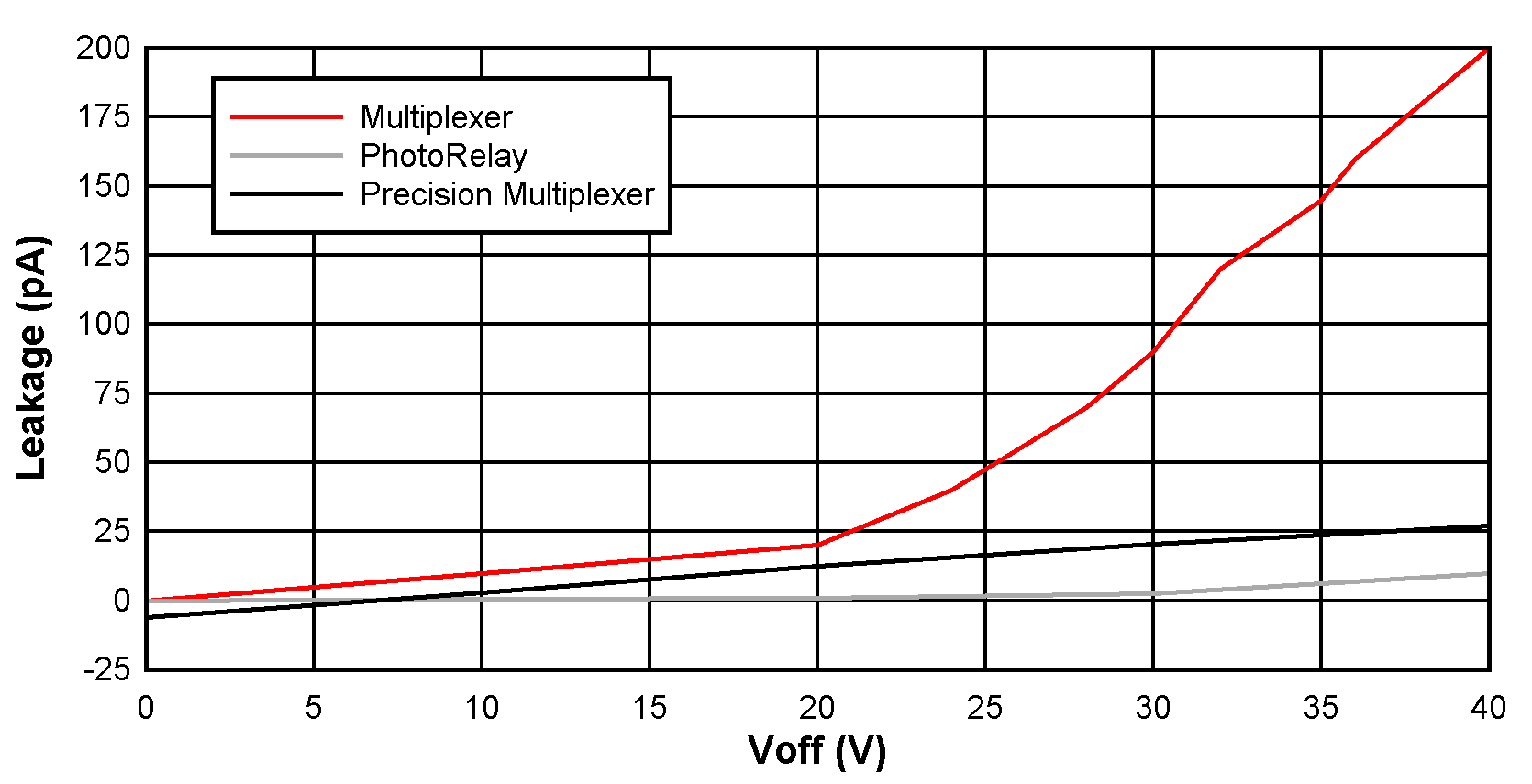SCDA036A May 2022 – June 2024 TMUX8212 , TMUXS7614D
- 1
- Abstract
- Trademarks
- 1 Size Requirement
- 2 Reliability Over Time
- 3 Power Consumption
- 4 Switching Speed and Hot Switching
- 5 Signal Isolation
- 6 Capacitance
- 7 On-Resistance and Flatness
- 8 Leakage Current
- 9 Integrated Protection
- 10Latch-up Immunity
- 11Galvanic Isolation
- 12Conclusion
- 13References
- 14Revision History
8 Leakage Current
One key performance metric in precision systems is leakage current. If a large voltage is applied across the switch when it is off, unwanted current can flow through the MOSFETs. Modern MOSFET designs have reduced this leakage significantly, but for some applications even a few picoamps can affect system performance.
This leakage is typically defined as Ioff or off-leakage current. For a mechanical relay, this leakage would be essentially zero, as there is no path for the current to take other than through the insulator. In solid state solutions, the leakage current mostly comes from the Backgate of the MOSFETs. Because photorelays do not have a ground reference, the only path current can take is across the switch. In a Multiplexer, there is some amount of leakage current with respect to ground. TI’s Flat Ron Multiplexer has reduced the leakage of the switch significantly compared to a conventional multiplexer. While not as low as Photorelays, these devices offer compelling performance given their integration.
 Figure 8-1 Off-Leakage Current of a
Photorelay, Conventional Multiplexer, and TI’s Flat Ron Multiplexer
Figure 8-1 Off-Leakage Current of a
Photorelay, Conventional Multiplexer, and TI’s Flat Ron Multiplexer The final note to remember for leakage current, is temperature dependency. Ioff increases exponentially across temperature. This behavior is true for both Photorelays and multiplexers. As a result, system temperature need to be kept as low as possible for precision applications, ideally below 50°C.